The word cenote, which comes from the Maya “dz’onot” or “ts’ono’ot” meaning “sacred well,” is a geological formation characteristic of karst regions, especially the Yucatán Peninsula in Mexico.
It is a sinkhole or doline formed by the collapse of limestone rock, revealing a natural well filled with fresh water and sometimes capped by a layer of salt water if the cenote connects to the sea through underground channels.
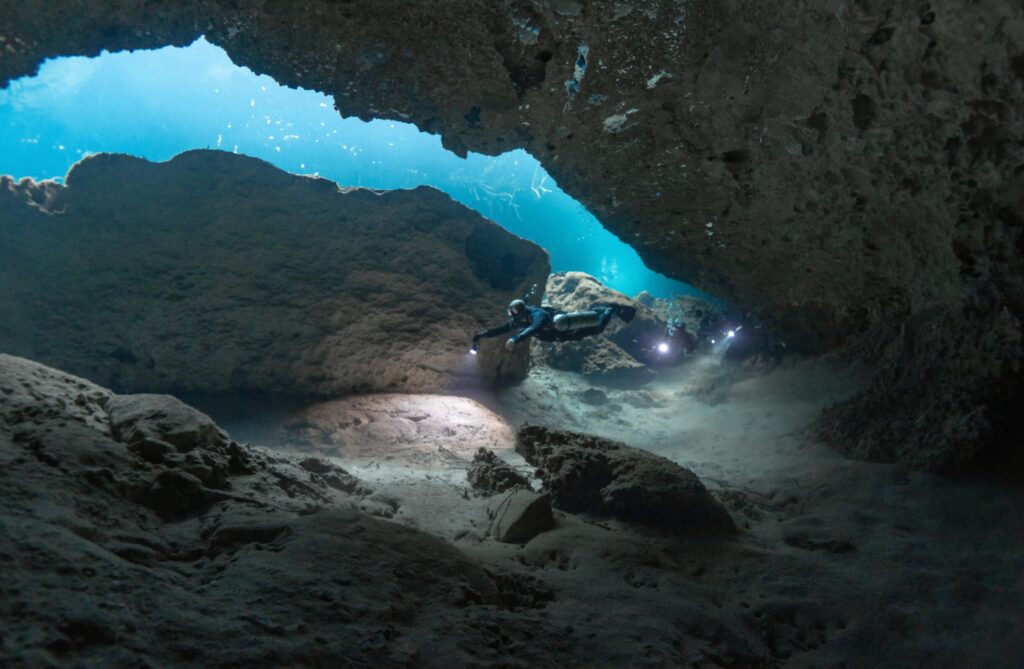
The geological origin and formation process of cenotes
Cenotes, those spectacular natural freshwater wells, have their origins in the tumultuous geological history of the Yucatán Peninsula.
It all began about 66 million years ago, when a ten‑kilometer‑wide asteroid struck the Earth and created the Chicxulub crater, triggering the extinction of the dinosaurs in the process.
📌 According to Futura Sciences, the force of the impact was equivalent to several billion times that of the Hiroshima bomb.
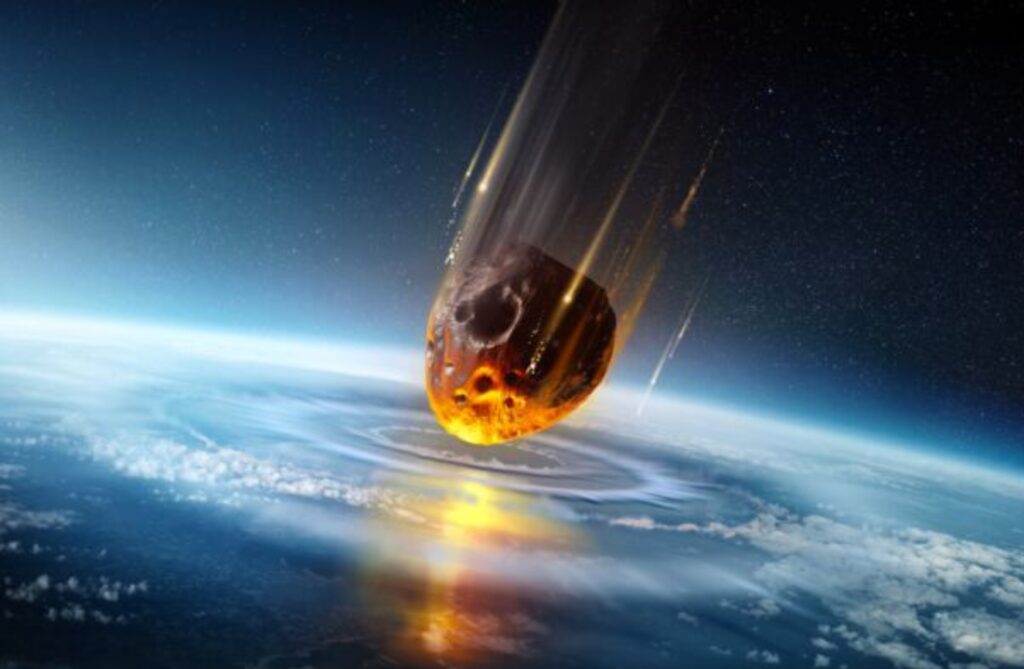
This vast crater was gradually overtaken by the sea, covered by a thick layer of limestone formed from the compression of ancient coral reefs. It is this porous rock that would play a fundamental role in the creation of cenotes.
Over time, rainwater seeps into this highly permeable limestone. It slowly erodes the rock from within, dissolving the limestone and carving out immense underground cavities.
Throughout the ice ages, sea levels fluctuated. When they dropped, some of these caverns became exposed to the open air, further accelerating erosion.
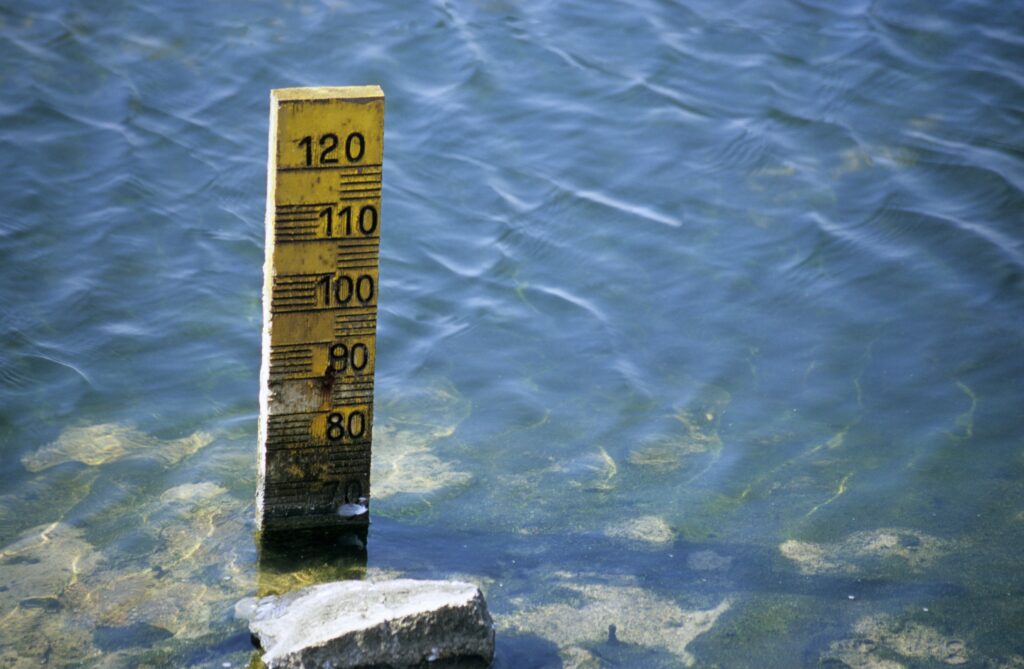
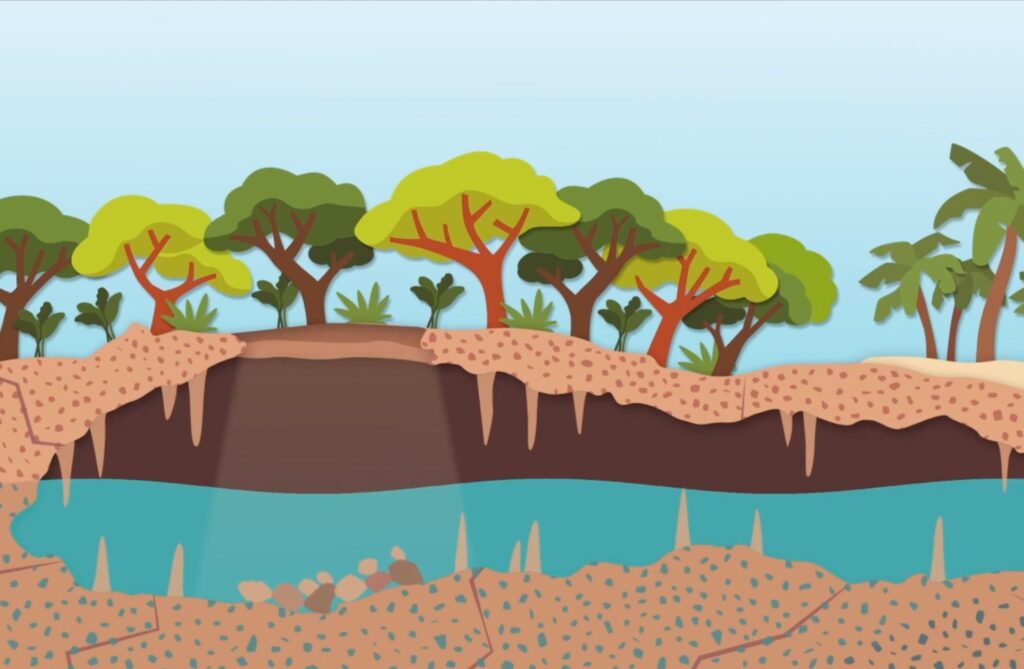
Then, after tens of thousands of years, the roofs of these cavities finally collapsed, revealing shafts of clear water, sometimes hundreds of meters deep: the cenotes.
It is therefore the combination of two major natural phenomena: the asteroid impact and the formation of limestone, and the gradual erosion of that limestone by rainwater that gave rise to these unique structures.
It is thanks to this slow work of nature that we can now enjoy the incredible experience of scuba diving in cenotes!!
What are the different types of cenotes?
The collapse of a cenote’s ceiling directly determines the type of cenote, based on the extent and shape of that collapse.
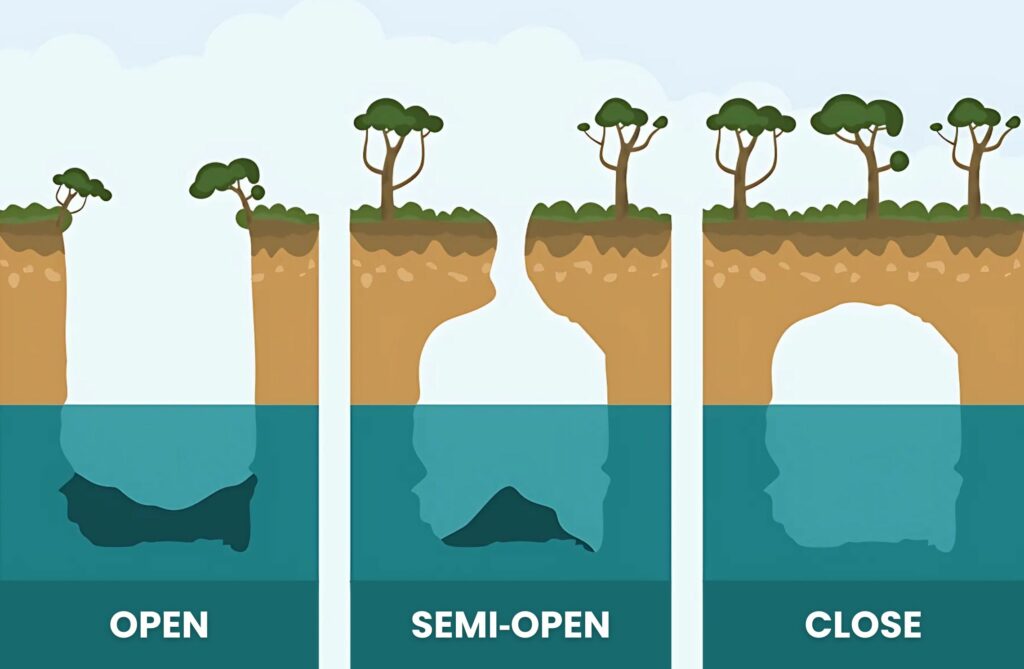
They can emerge in the heart of the jungle, hide among mangroves, extend into the open sea, or even appear in the middle of a town like Cenote Zaci in Valladolid.
On the Yucatán Peninsula, three main types of cenotes are distinguished:
Open Cenote
Open cenotes, the most famous type of cenotes, are natural sinkholes open to the sky, offering an exceptional swimming experience in crystal clear waters, often surrounded by lush tropical vegetation.
They resemble deep ponds or small lakes, bathed in natural light.
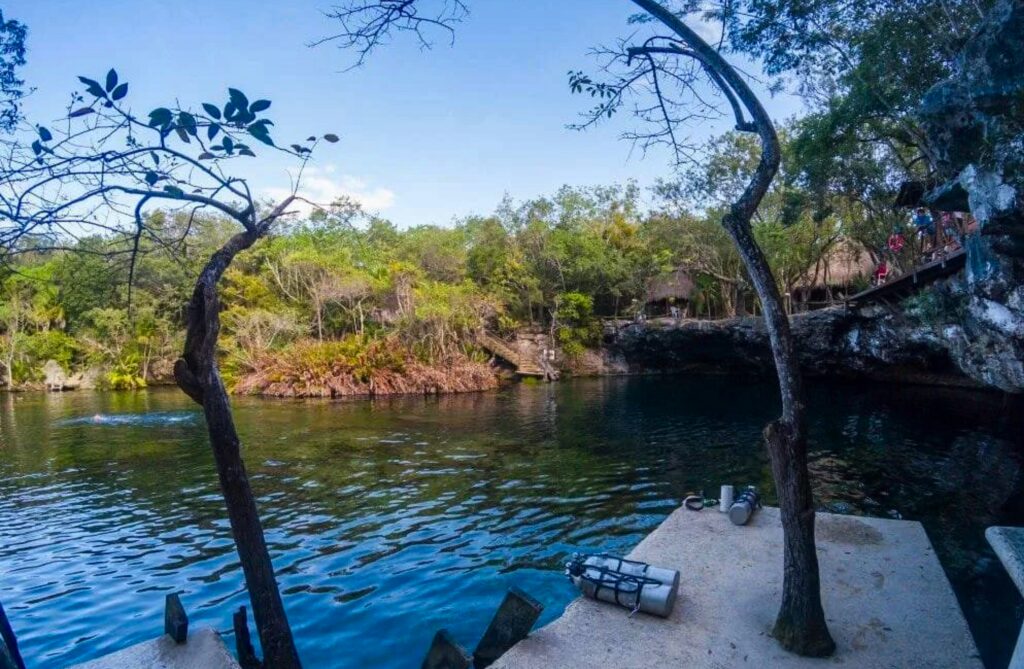
Light access is optimal, which promotes the growth of vegetation and a rich aquatic life.
Among open cenotes, notable examples include:
- Cenote Ik Kil
- Cenote Jardín del Edén
- Casa Cenote
It is also in the calm waters of Casa Cenote and Jardín del Edén that many travelers experience their first cenote dive, an unforgettable introduction to the underwater world of cenotes.
Semi‑open Cenote
Semi open cenotes are partially open to the outside but still retain part of their ceiling intact.
They are often accessed by a staircase or a narrow opening, revealing a natural pool partly hidden in a cave.
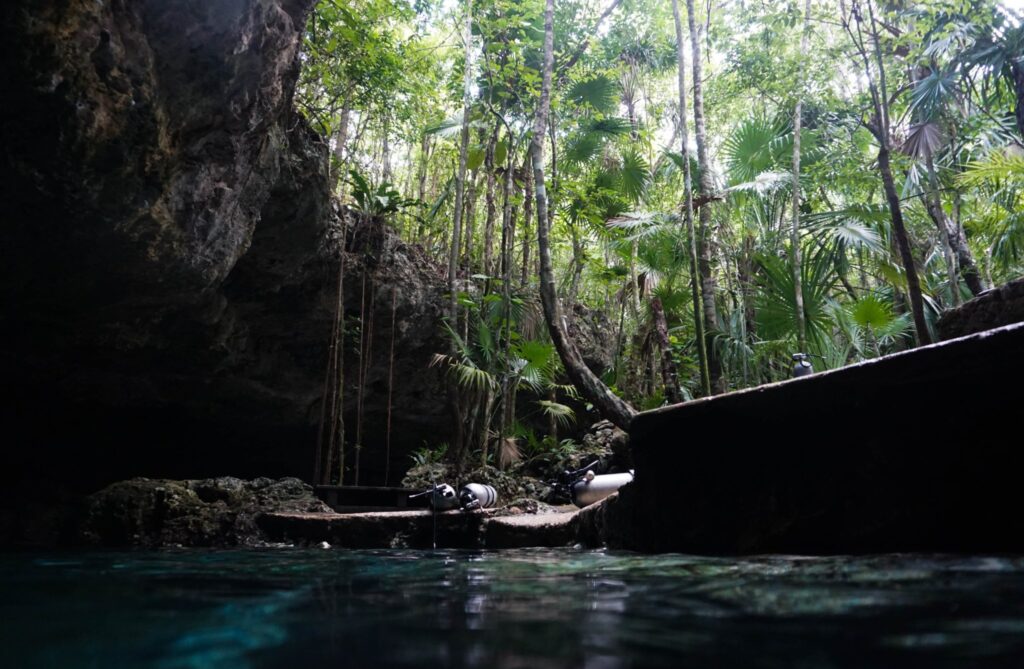

These cenotes offer spectacular light displays, where sunbeams stream through openings to illuminate the turquoise waters. This contrast of shadow and light makes them highly sought‑after by divers.
Notable semi‑open cenotes include:
- Cenote Chac Mool
- Gran Cenote
- Cenote Yakuun
Close Cenote
A closed cenote is a fully enclosed underground cavity, typically accessed by a staircase or tunnel.
These mysterious sites are often fitted out for safe visits and unveil impressive geological formations such as stalactites and stalagmites sculpted by time.
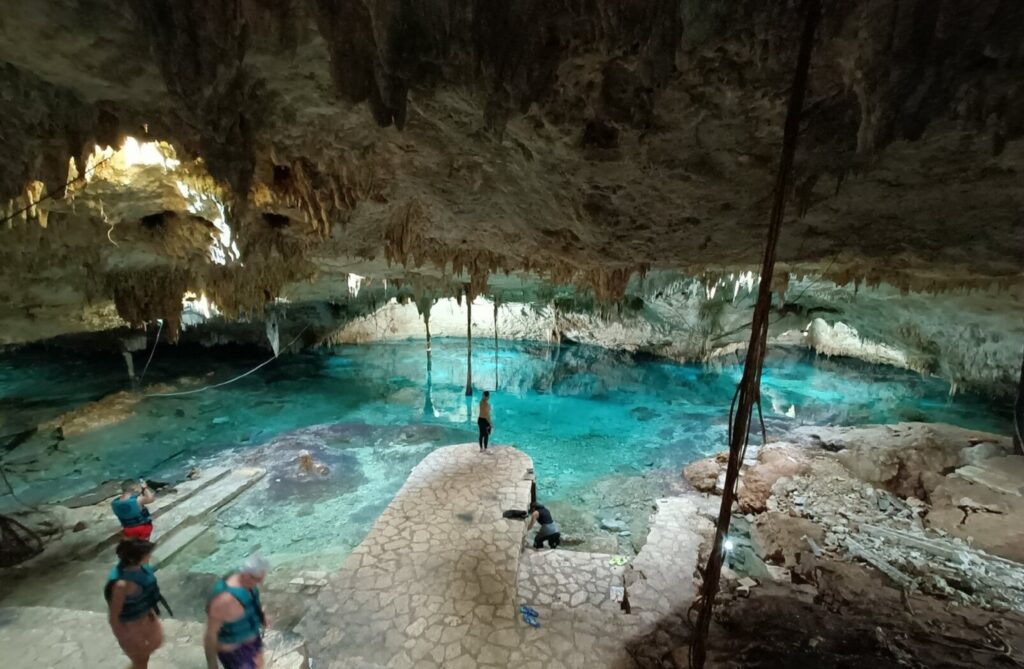
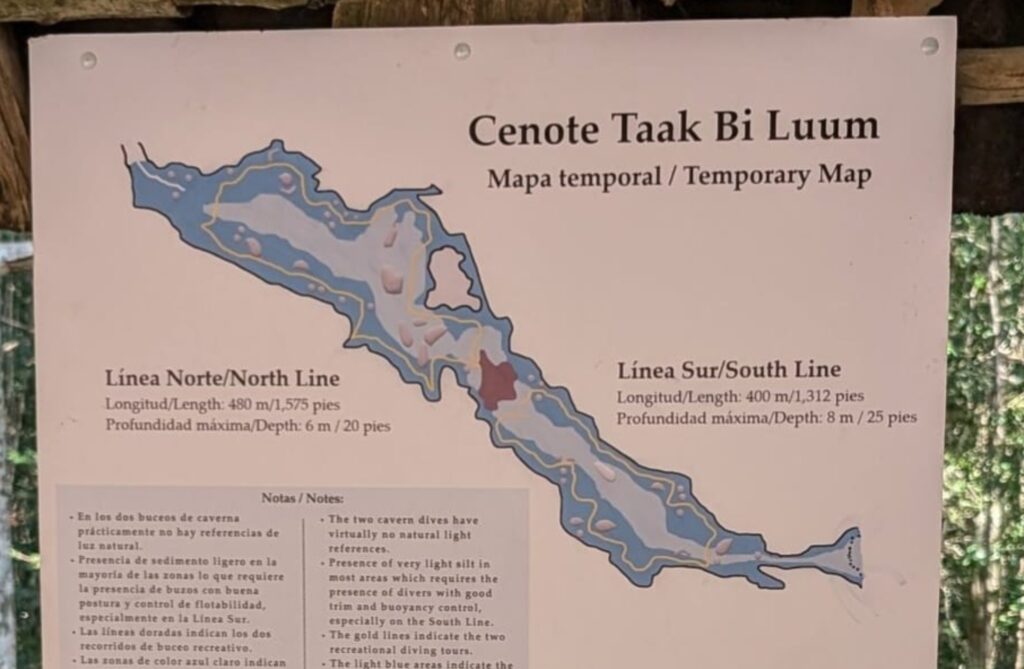
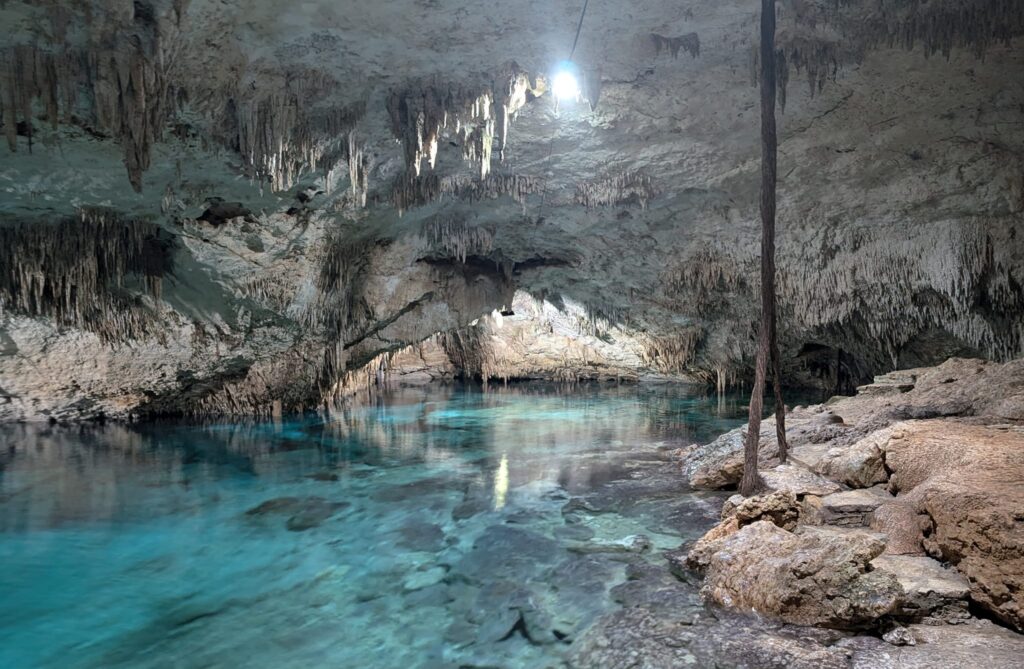
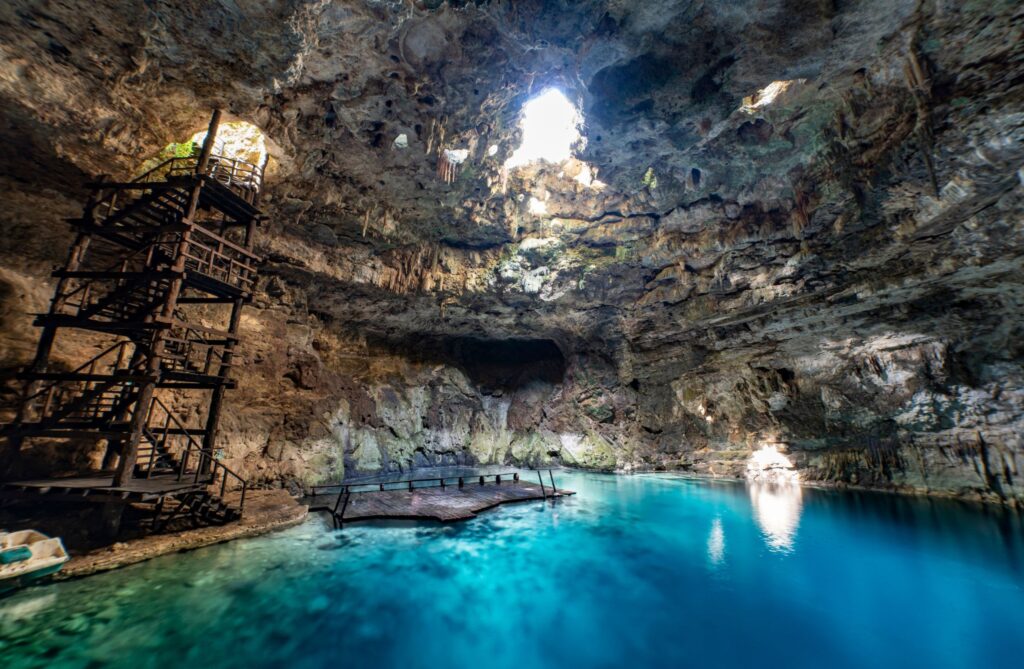
Very little natural light penetrates these caverns, creating a mysterious atmosphere. That’s why some sites, like Taak Bi Ha, are equipped with artificial lighting to reveal the cenote’s hidden beauty.
Among the best‑known closed cenotes are:
- Cenote Taak Bi Ha
- Rio Secreto
- Cenote de Suytun
These cenotes host a unique biodiversity, composed of species adapted to both darkness and light, making them true ecological oases.
Why were cenotes important to the Mayas?
In the Yucatán Peninsula, cenotes were indispensable to the Maya’s survival between 2000 BCE and 1500 CE.
In a region where surface rivers were virtually nonexistent, these natural wells provided the fresh water essential for drinking, agriculture, and daily life.
Without them, the establishment of major cities like Chichén Itzá would never have been possible.
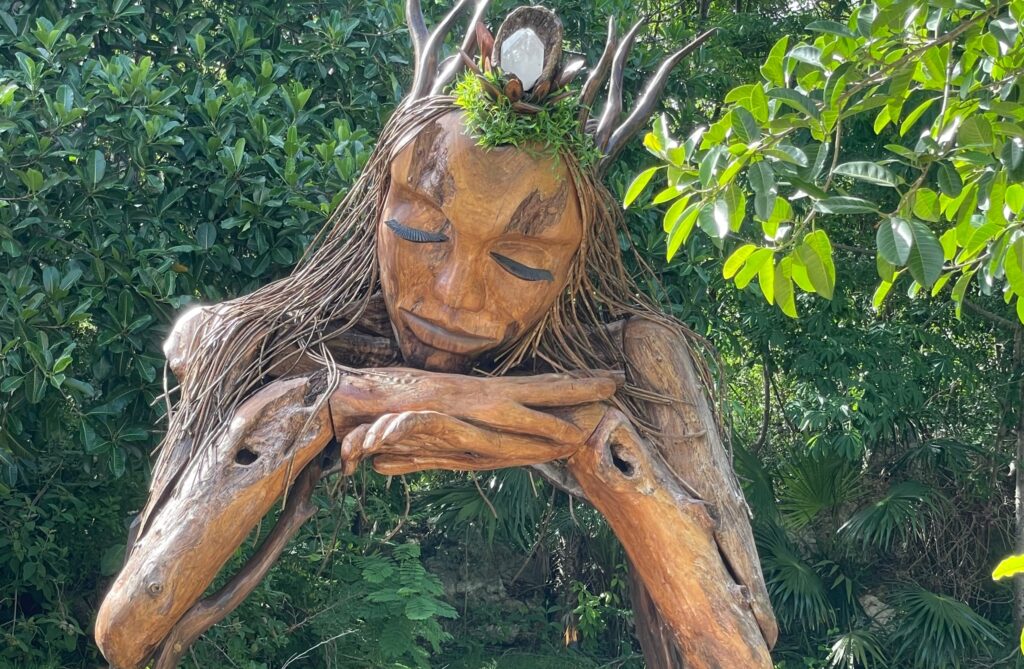
Beyond their vital role, cenotes also served as community gathering places around which villages and urban centers developed. They were thus at the heart of the economic, agricultural, and social life of the Maya civilization.
Why did the Mayas consider cenotes sacred?
For the Maya, the word “cenote,” derived from the Maya dz’onot or ts’ono’ot and meaning “sacred well,” referred to places regarded as portals to Xibalbá, the underworld where the gods and the souls of the dead resided. They embodied a direct connection between humans and the divine.
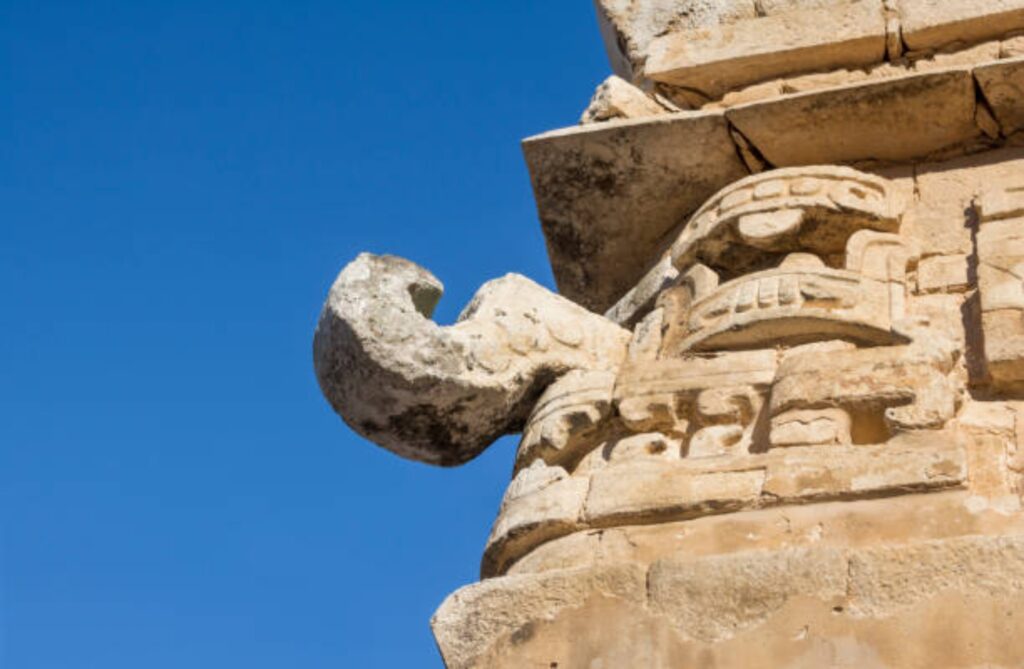
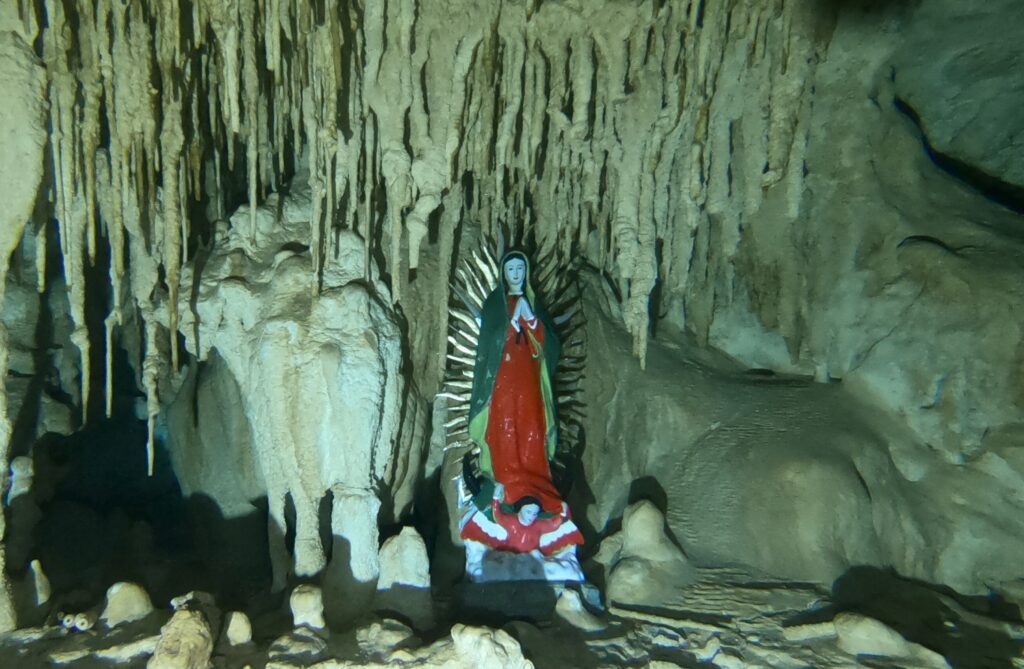
The Maya believed that spirits, notably the rain god Chaac, dwelled in these mysterious chasms.
That’s why they performed religious rituals and made offerings there to honor the gods and communicate with the spiritual world.
Archaeological finds in the cenotes, such as pottery and figurines, still bear witness to these ancient ritual practices today.
For the Maya, cenotes thus embodied a sacred boundary between earthly life and the hereafter, between nurturing waters and the invisible realm.
What can you see in cenotes?
What you can observe largely depends on the type of cenote where you go snorkeling or scuba diving.
While diving, you’ll often have the chance to encounter marine life, admire spectacular formations like stalactites and stalagmites up close, and witness stunning light displays.
It all depends on the cenote you dive in!
Marine species in cenotes:
Cenotes host exceptional biodiversity, with species perfectly adapted to darkness and subterranean conditions.
You’ll find blind fish such as the Mexican blind tetra and the catfish Satan eurystomus, as well as troglobitic shrimps and crayfish.
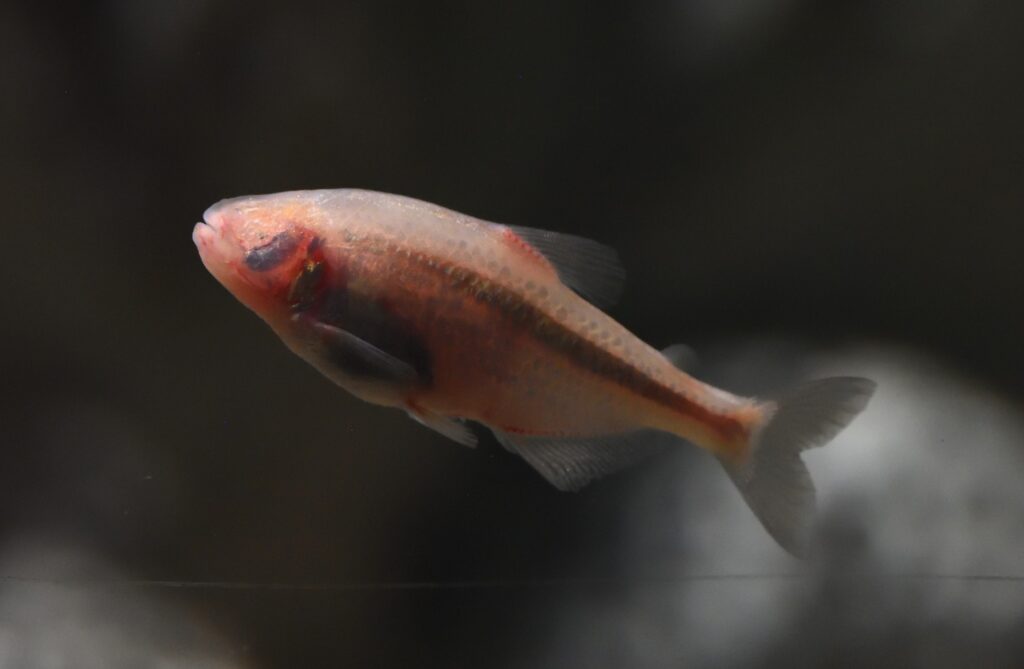
Some bats, such as the short‑tailed bat, also take refuge there, contributing to pollination.
These unique ecosystems also host freshwater turtles and rare endemic species, such as the Yucatán blind eel and the Mexican blind brotula.
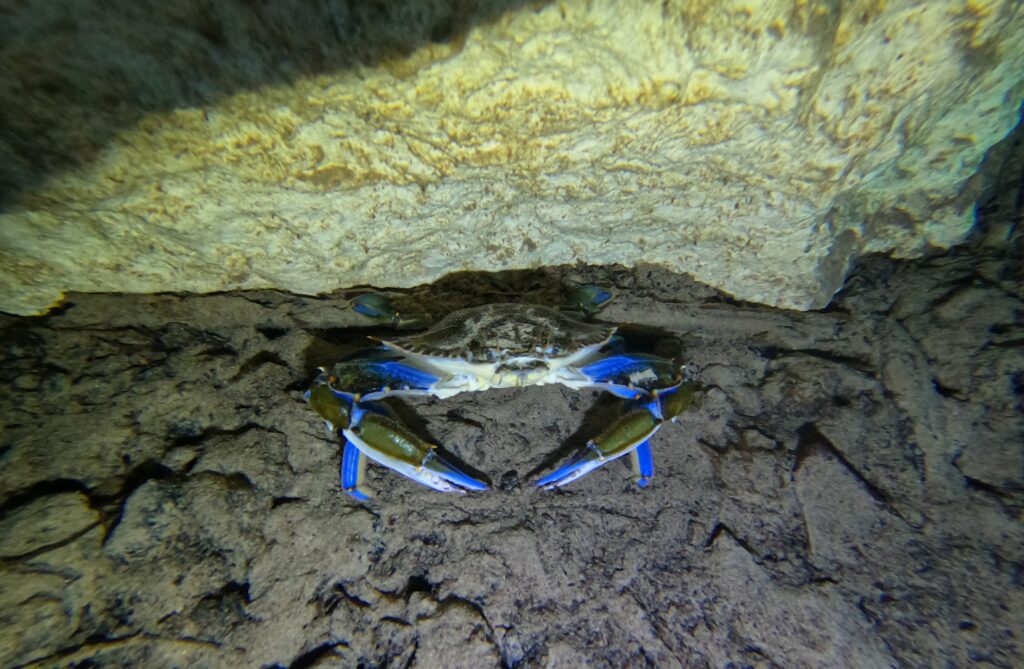
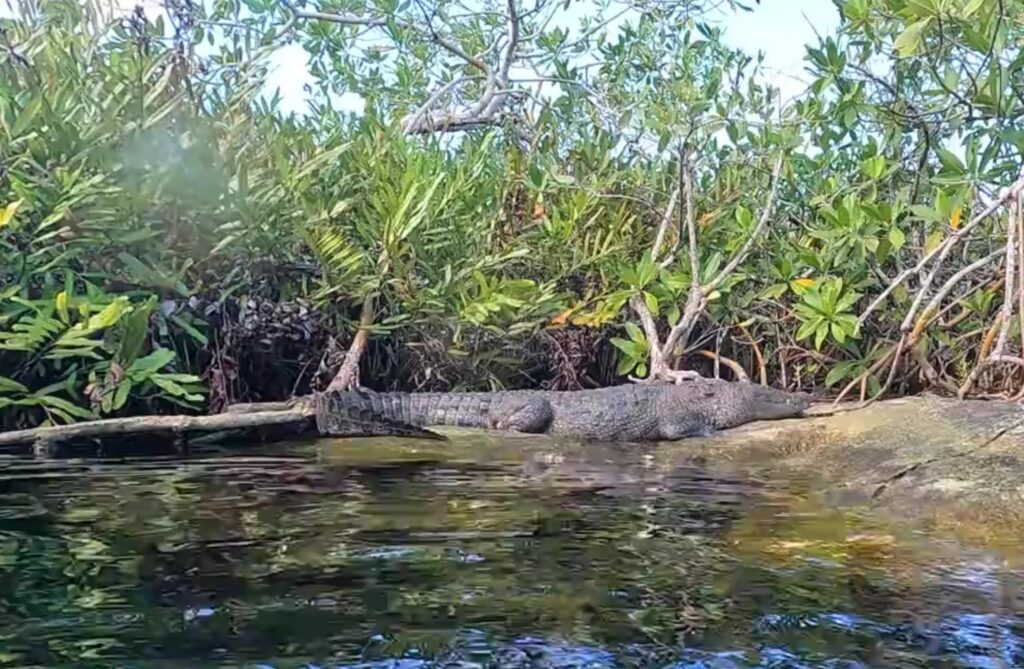
Additionally, at Casa Cenote you have the chance to see a crocodile, and there’s even a blue crab there!!
The wildlife of the cenotes fascinatingly illustrates life’s ability to adapt to extreme and isolated environments.
Stalactites and stalagmites
Mexican cenotes, especially those in the Yucatán, often present an impressive display of stalactites and stalagmites, sometimes joining together to form columns or pillars that seem to support the cave’s vault.
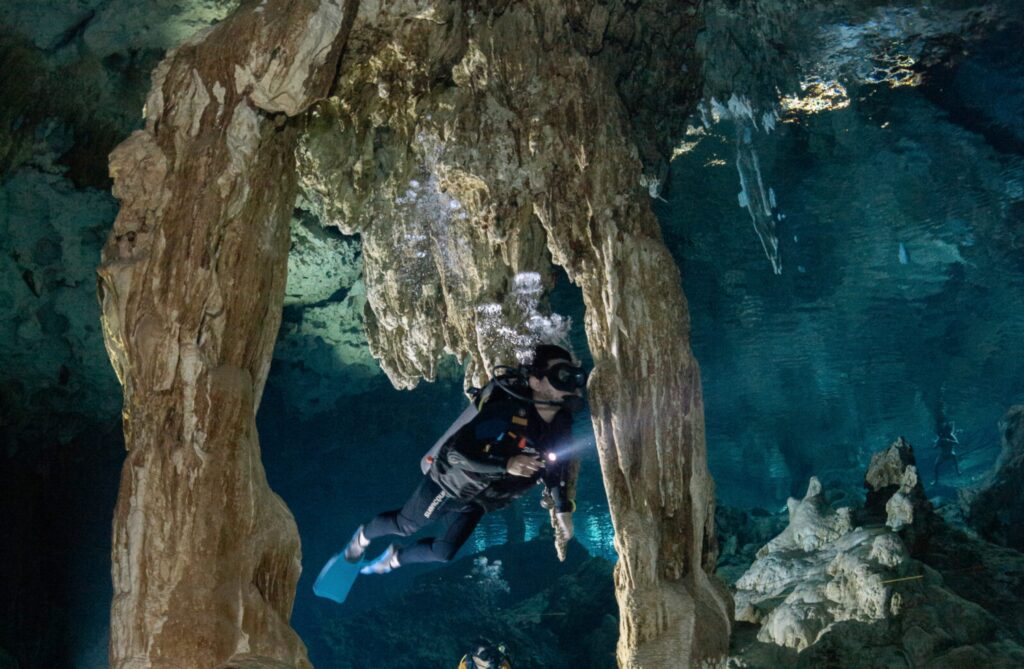
These structures are very fragile, and their growth is an extremely slow process, making their preservation essential.
Cyril, what’s the difference between stalactites and stalagmites?
Stalactites hang from the cave ceiling, while stalagmites rise from the cave floor toward the ceiling.
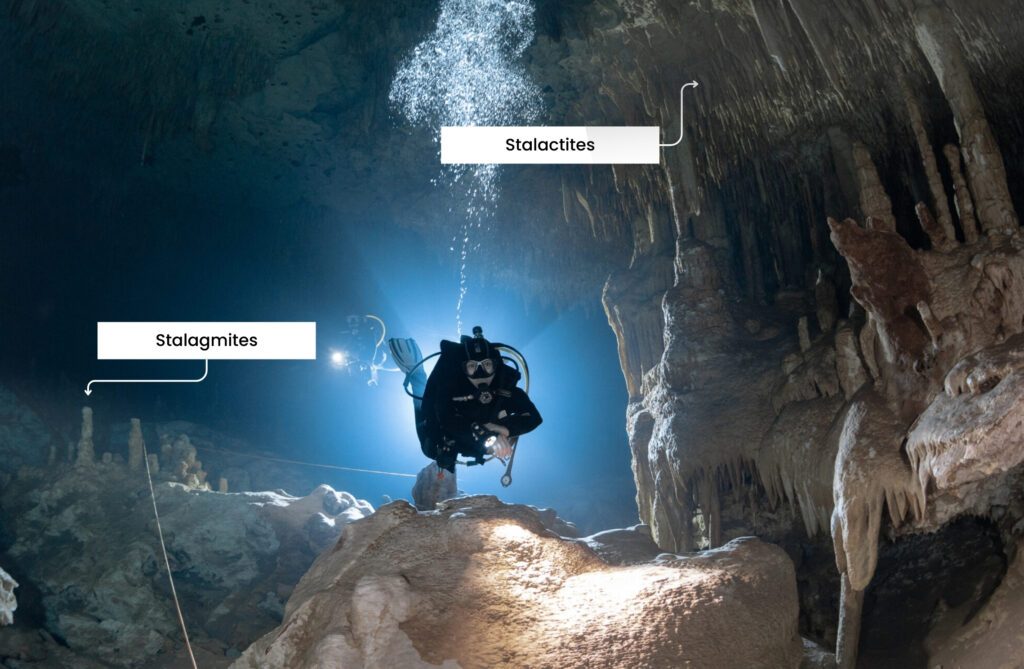
These formations are created by the slow deposition of calcite dissolved in water that seeps through limestone over thousands of years.
Among all the cenotes in the Riviera Maya, Dos Ojos cenote is the most accessible while Dreamgate cenote is ideal for experienced divers; both feature the finest stalactites and stalagmites.
Incredible light displays
In addition to stalactites and stalagmites, cenotes can display spectacular light effects when sunlight filters through cracks in the rock, as well as crystal clear waters often colder than surface sea water, sourced from underground reservoirs.
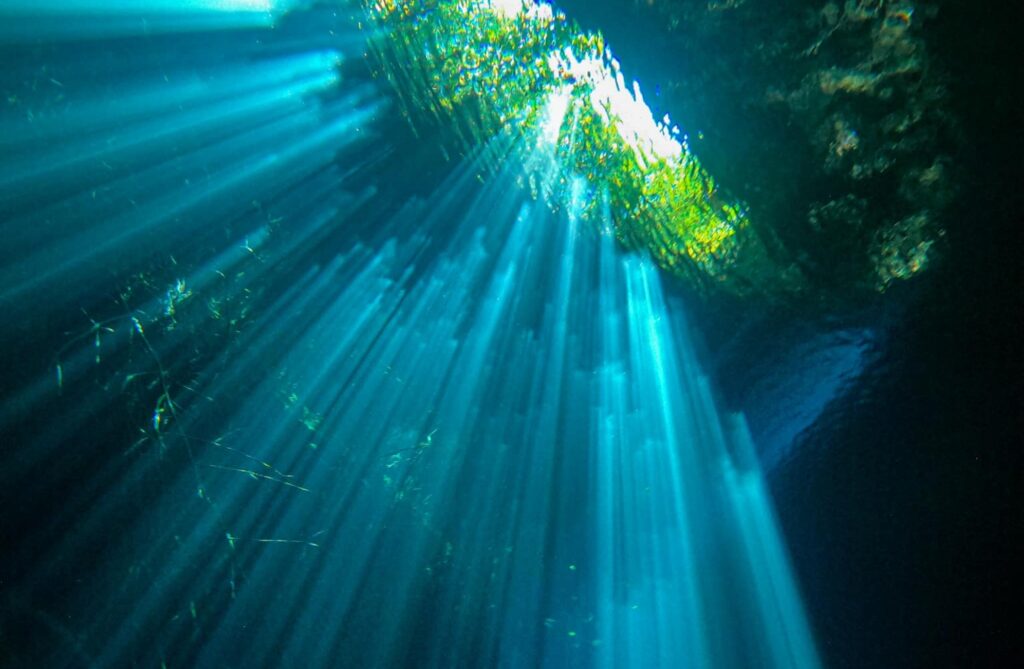
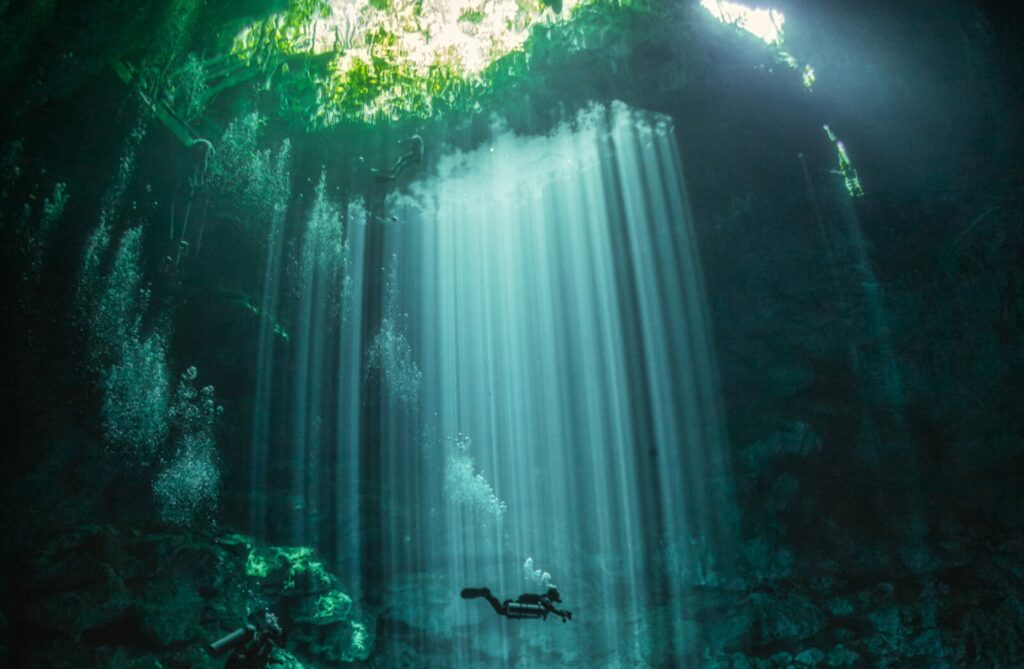
You can also see tree roots weaving into the underground landscape, which adds to the natural beauty of the site.
How many cenotes are there in Mexico?
The Yucatán Peninsula is home to the vast majority of these karst formations, with around 10,000 cenotes in total, only about a quarter of which have been discovered and studied.
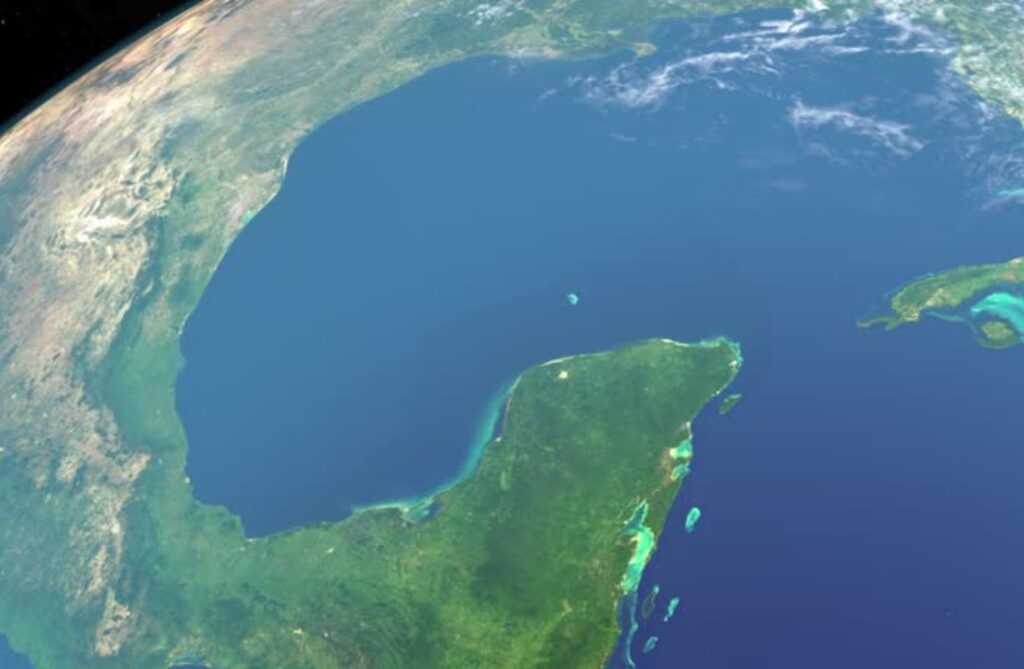
The most famous cenotes, such as Dos Ojos, Gran Cenote, Chac Mool and others, are located between Playa del Carmen and Tulum.
However, this is only a glimpse of the many hidden treasures the Yucatán region holds.
What makes cenotes so special?
Beyond its natural beauty, what I find most impressive about a cenote is its atmosphere, brought to life by the interplay of light filtering through its openings.
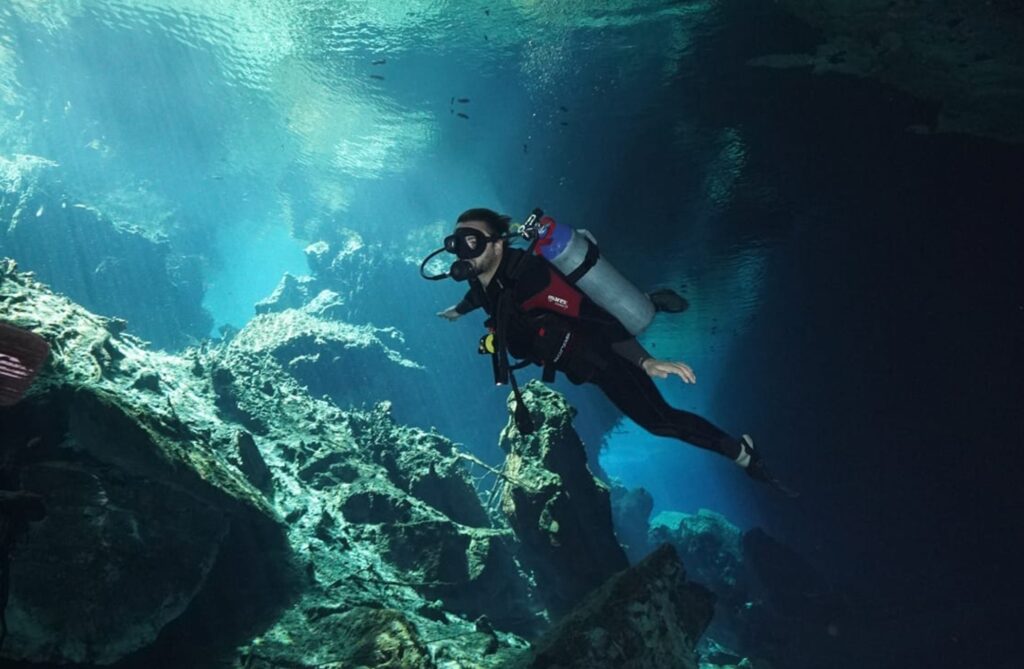
If you have the chance to dive into these aquatic labyrinths it feels like exploring a parallel world.
You will be immersed in crystal clear waters where stalagmites, stalactites and prehistoric bone formations turn your dive into a real tour of a natural history museum.
